Nikko Weather Guide: Monthly Temperatures and What to Wear

Learn the characteristics of weather in Nikko with average temperatures from January to December, along with tips on what to wear in spring, summer, autumn, and winter.
Climate Characteristics of Nikko
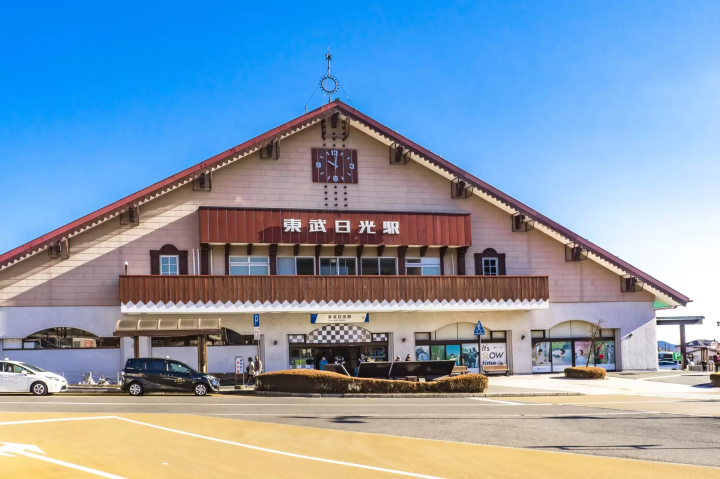
Nikko is characterized by its high altitude with lower temperatures compared to Tokyo.
In particular, winter can be very cold, with days of sub-zero temperatures occurring in Oku-Nikko. Additionally, summers are cool and it's a popular summer retreat.
The annual average temperature is about 7°C to 8°C. January and February can also see sub-zero temperatures. During the rainy season in June and July, there is a lot of precipitation, while winter often brings dry days.
It is a tourist destination where visitors can enjoy the charms of each season, including the fresh greenery of spring, the autumn leaves, and the winter snow scenery.
Weather in Nikko
Climate Characteristics of Nikko
Spring Weather: March to May
Summer Weather: June to August
Autumn Weather: September to November
Winter Weather: December to February
Spring Weather: March to May
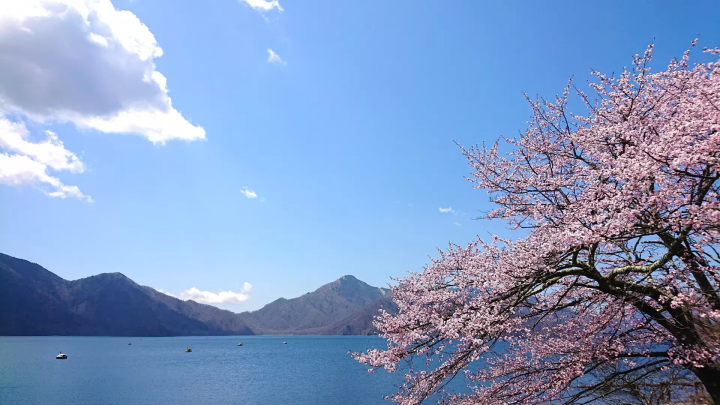
From March to May, Nikko experiences the arrival of spring. However, the days have plenty of chilly mornings and evenings. From late April to May, the cherry blossoms at Lake Chuzenji and the fresh greenery along Irohazaka Slope reach their peak, allowing visitors to enjoy breathtaking spring scenery.
The Average Temperatures From March to May: Minimum Is 0.3°C and Average Maximum Is 9.8°C
During this period, the temperatures in Nikko gradually rise from the lingering cold of March towards a more spring-like warmth. Due to the area's high altitude, temperatures are lower than those in the Kanto Plain. Especially in March, there are still many days filled with harsh cold.
The monthly minimum temperatures, average temperatures, and maximum temperatures are as follows:
- Average Temperature
- Maximum Temperature
- Lowest Temperatures
|
|
March | April | May |
|
|
-0.3°C | 5.1°C | 10.3°C |
|
|
4.2℃ | 10.1℃ | -15.3℃ |
|
|
-4.6℃ | 0.2℃ | 5.5℃ |
In March, you can still feel the winter chill, and it is not uncommon for mornings and evenings to drop below-freezing temperatures. By April, the number of days exceeding 10°C during the daytime increases, signaling the arrival of spring. May brings even warmer temperatures, making it a beautiful season filled with fresh greenery.
During this time, the highlights of sightseeing in Nikko include the cherry blossoms around Lake Chuzenji, which reach their peak from late April to May, and the fresh greenery of Irohazaka Slope. In Oku-Nikko, the high altitude may delay the blooming of cherry blossoms, allowing for cherry blossom viewing even until early May.
Recommended Clothing from March to May
It is still quite cold in March. Since mornings and evenings can drop below freezing, warm clothing such as heavy coats, down jackets, gloves, and scarves are necessary.
Upon entering April, more days exceed 10°C during the daytime. However, it remains chilly in the mornings and evenings, so having a jacket, cardigan, or a light coat on hand is recommended.
By May, temperatures become even warmer, and long-sleeved shirts or light outerwear are comfortable during the day. However, in the high-altitude regions of Oku-Nikko, there can still be cold days. It’s best to choose clothing that is easy to put on or take off depending on the temperature.
Additionally, since there are many opportunities for walking during spring in Nikko, comfortable sneakers or trekking shoes are recommended. Since UV rays become stronger in May, it’s important to prepare hats and sunscreen to protect yourself from UV exposure.
Spring can have significant temperature variations, so please pay attention to your clothing choices to comfortably enjoy sightseeing.
Summer Weather: June to August

Picture courtesy of Photo AC
Nikko's summers are relatively cool, making it a popular summer retreat. The temperatures are low in the mornings and evenings especially in Oku-Nikko, making clothing choices important.
The Average Temperatures From June to August: Minimum Is 13.6°C and Average Maximum Is 21°C
Nikko's summers are characterized by lower temperatures compared to the Kanto Plain, resulting in a comfortable climate. The monthly minimum temperatures, average temperatures, and maximum temperatures are as follows:
- Average Temperature
- Maximum Temperature
- Minimum Temperature
|
|
December | January | February |
|
|
18°C | 22.1°C | 22.9°C |
|
|
10.4°C | 0.7°C | -5.9°C |
|
|
10.4℃ | -14.9℃ | 15.6℃ |
Due to the rainy season in June, there is a lot of rain and humidity is high. However, the number of sunny days increases in July and August, making it an ideal time for sightseeing. This is a great season to enjoy nature, with activities such as cruises on Lake Chuzenji and hiking in Senjogahara Marshland.
Recommended Clothing from June to August
During the day, you'll be comfortable in short-sleeve T-shirts or light long-sleeve shirts. However, the mornings and evenings still remain cool. Therefore, we recommend having a light cardigan or a light jacket on hand.
Since June has a lot of rain, having a foldable umbrella or raincoat is also convenient.
UV rays become stronger in July and August. Make sure to wear hats, sunglasses, and sunscreen. Because of the large temperature differences in high-altitude areas, it's best to wear clothing that is easy to put on or take off.
Autumn Weather: September to November
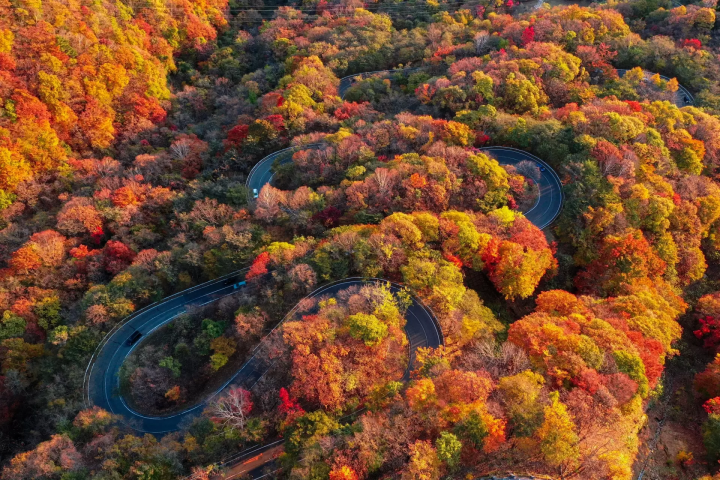
Picture courtesy of Photo AC
Autumn in Nikko is the time when the chill in the mornings and evenings increases, gradually transitioning into winter weather. From October to November, the autumn leaves reach their peak, attracting many tourists.
The average minimum temperature in Nikko from September to November is 5.9°C, and the average maximum temperature is 13.7°C
Autumn in Nikko experiences significant temperature variations, especially with many chilly days in the mornings and evenings. The monthly minimum temperatures, average temperatures, and maximum temperatures are as follows:
- Average Temperature
- Maximum Temperature
- Minimum Temperature
|
|
September | October | November |
|
|
15.2°C | 9.6°C | 4.4°C |
|
|
18.9°C | 13.7°C | 8.6°C |
|
|
11.9℃ | 5.7℃ | -0.2℃ |
In September, there are days when you can still feel the lingering summer heat. By October, the atmosphere becomes distinctly autumnal, and November brings a stronger hint of winter.
During this time, Nikko is particularly beautiful with the autumn foliage in places like Irohazaka Slope, Kegon Falls, and Ryuzu Falls. It is the perfect season for enjoying the fall foliage and hot spring tours.
Recommended Clothing from September to November
In September, you'll still experience many warm days, so having long-sleeve shirts or light cardigans will keep you comfortable. As we enter October, temperatures drop significantly in the mornings and evenings, making jackets or light coats necessary.
In November, the approach of winter brings cold weather, especially in the high-altitude areas of Oku-Nikko, where temperatures can drop below freezing. Warm coats, sweaters, and winter gear are essential during this period.
Moreover, the influx of tourists increases the amount of walking during the autumn foliage season, so it's important to choose comfortable shoes. Aim for clothing that can accommodate the temperature fluctuations, and enjoy the beautiful autumn in Nikko.
Winter Weather: December to February
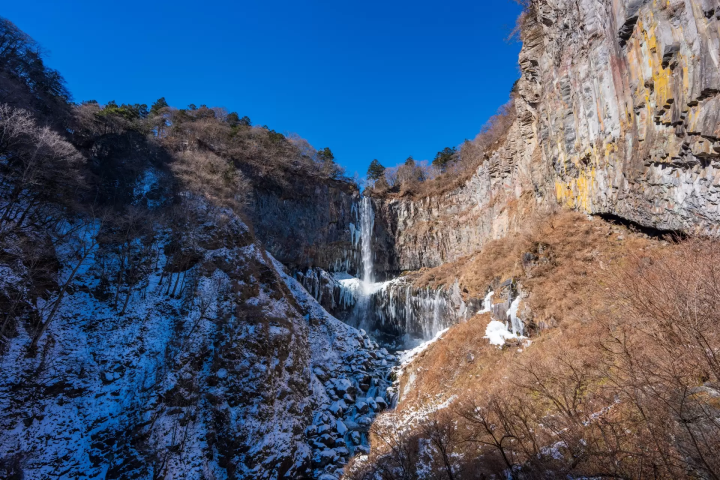
Picture courtesy of Photo AC
Winter in Nikko is marked by genuine cold. Particularly in Oku-Nikko, snowy days become more frequent. Even during the day, temperatures are low, making proper winter preparations essential.
The Temperature From December to February: The Average Minimum Is -6.8°C and Average Maximum Is 1°C
During winter, there are many days when the temperature drops below freezing, resulting in persistently harsh cold. The monthly minimum temperatures, average temperatures, and maximum temperatures are as follows:
- Average Temperature
- Maximum Temperature
- Minimum Temperature
|
|
December | January | February |
|
|
-1°C | -3.9°C | -3.5°C |
|
|
2.8°C | -0.3°C | 0.6°C |
|
|
-4.9℃ | -7.9℃ | -7.8℃ |
There can be snowfall from December to February, allowing visitors to enjoy the winter scenery of Lake Chuzenji and Kegon Falls alongside the snow-viewing baths at Yumoto Onsen.
Recommended Clothing from December to February
Winter in Nikko is characterized by harsh cold. Especially in Oku-Nikko, there is snowfall and icy road conditions that make winter preparations and suitable footwear essential. To comfortably enjoy sightseeing, solid winter gear is necessary.
For outerwear, down jackets or heavy coats are recommended, and layering with heat-tech clothing or thick sweaters will help keep you warm. Additionally, make use of gloves, scarves, and hats to shield yourself from the cold wind.
Since there are many slippery areas, it’s crucial to wear non-slip shoes that are warm and waterproof. In snowy areas, snow boots or trekking shoes provide extra safety.
It may feel warm during the day when the sun is out. However, temperatures can drop below freezing in the mornings and evenings. Therefore, wearing clothing that is easy to put on or take off is key to temperature regulation. Be sure to take adequate cold precautions and enjoy the beautiful winter scenery of Nikko comfortably.
Frequently Asked Questions
What are the climate characteristics of Nikko?
Nikko is characterized by its high altitude, resulting in lower temperatures compared to the Kanto Plain. There are significant temperature variations throughout the year. Summers are cool, making it a popular summer retreat, while winters see heavy snowfall and harsh cold. Additionally, the temperatures can change rapidly in spring and autumn, making clothing choices important.
When does it start to snow in Nikko?
In Nikko, snowfall can begin as early as late November in some years, with the main snow season occurring from December to February. Particularly in high-altitude areas such as Oku-Nikko and Senjogahara, the roads may freeze and winter gear is essential.
When is the best season to visit Nikko?
The best seasons for sightseeing in Nikko are in spring (April to May) for the fresh greenery and autumn (October to November) for the beautiful fall foliage. Particularly during the autumn season, Irohazaka Slope and Kegon Falls are stunning and attract many tourists. Summer is also popular as a cool getaway, allowing visitors to enjoy hiking and outdoor activities in a pleasant climate.
Enjoy Exploring Nikko
The climate in Nikko varies significantly throughout the four seasons, and appropriate clothing differs depending on when you visit.
Spring and autumn have large temperature variations, so layering is essential. Summer requires protection against UV rays and lighter clothing, while winter necessitates proper cold-weather gear.
Be sure to check the seasonal temperatures and enjoy a comfortable trip to Nikko.
After graduating from high school, I enrolled in a scriptwriting course for three and a half years with the aim of becoming a screenwriter. After that, I started working as a writer to utilize my writing skills. At MATCHA, I mainly write articles introducing places to go out, but so far I have been involved in creating articles related to beauty, rental cars, and MVNO.









![[Mashiko Pottery Experience] Try your hand at making your very own unique piece of pottery!](https://resources.matcha-jp.com/resize/720x2000/2024/08/28-194470.webp)

















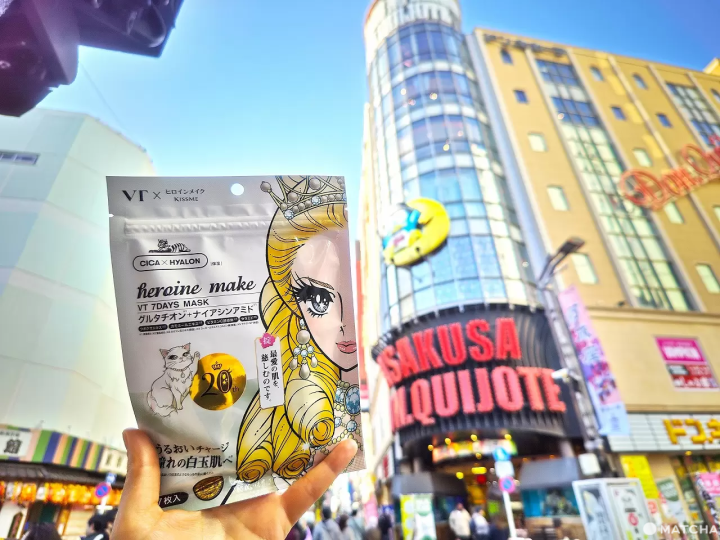
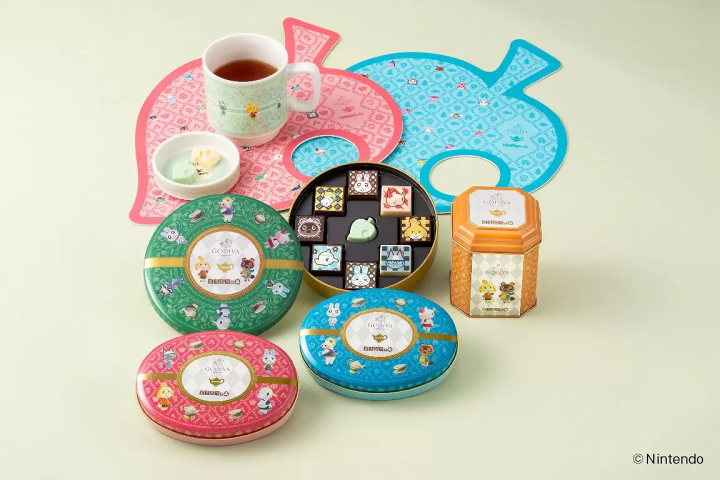
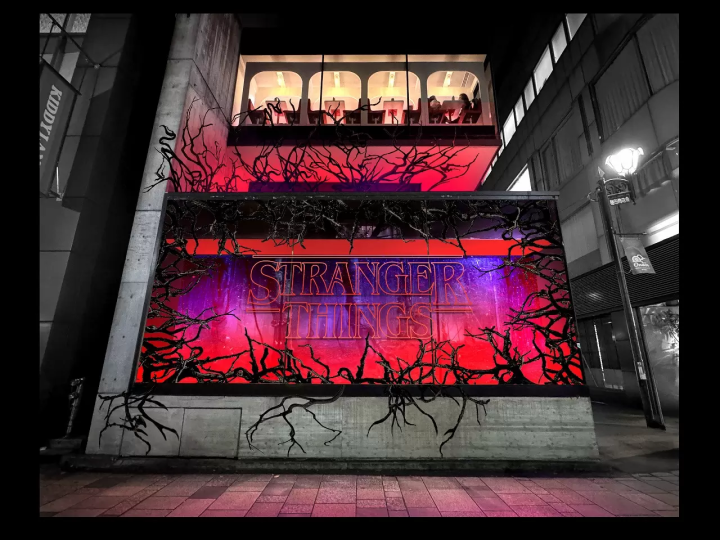
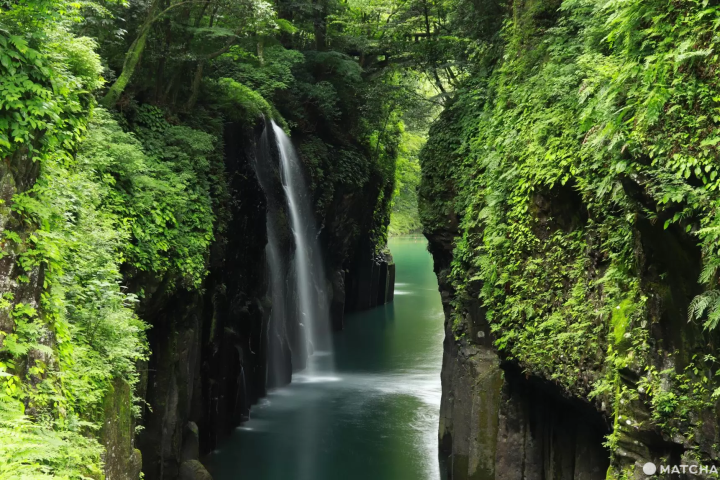




![[Wakayama Guide] Ume and Umeshu (Plum and Plum Wine)](https://resources.matcha-jp.com/resize/720x2000/2025/12/08-252248.webp)
![[2025 Update] From Kansai Airport to Namba - Recommended for travelers with large luggage! Travel comfortably by bus](https://resources.matcha-jp.com/resize/720x2000/2025/10/25-248088.webp)
![[ Naruto City, Tokushima Prefecture ] Experience the world's largest whirlpools up close on a sightseeing boat at the Spring Whirlpool Festival!](https://resources.matcha-jp.com/resize/720x2000/2025/02/05-222727.webp)
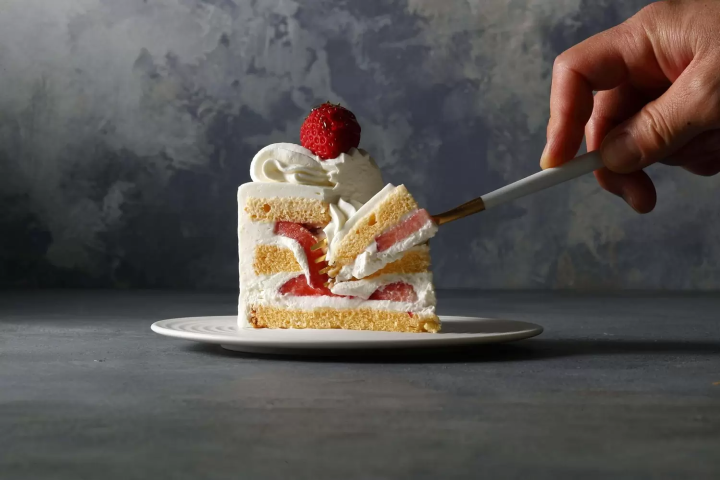
![Deep dive into Japanese brands! A tour of famous leather shoe stores with GENSEI & Nin [Madras Edition]](https://resources.matcha-jp.com/resize/720x2000/2025/12/17-253129.webp)